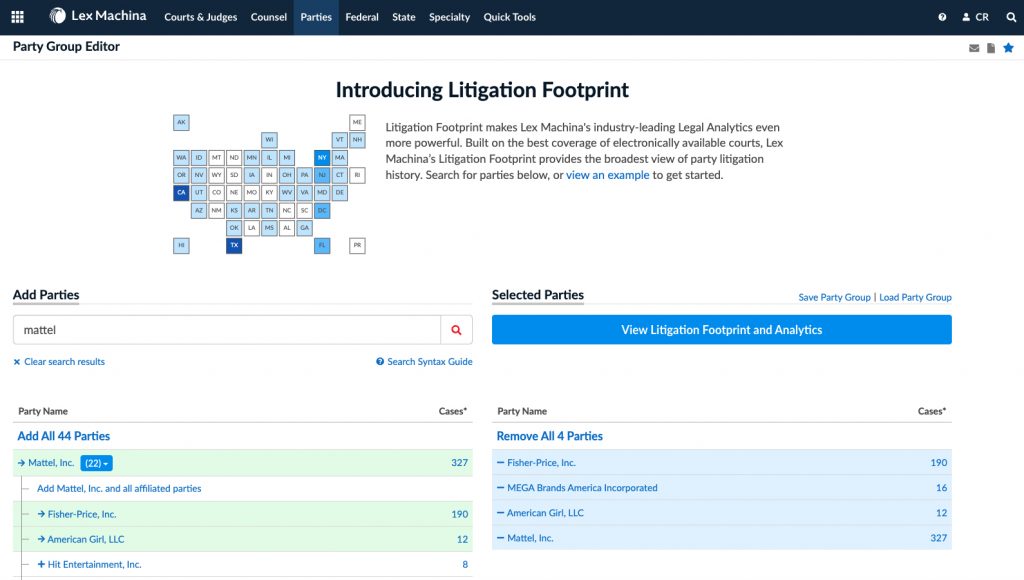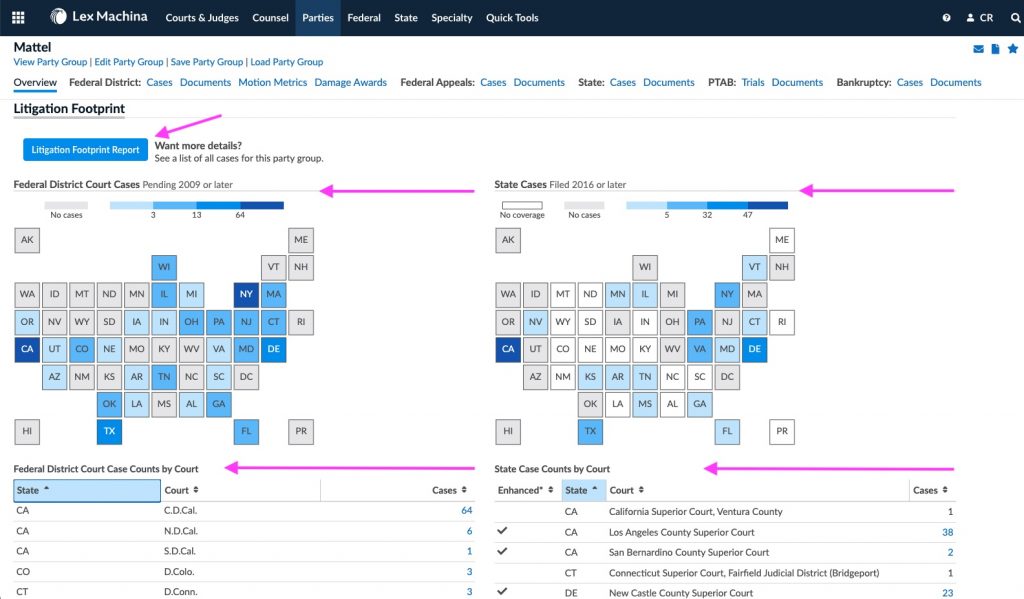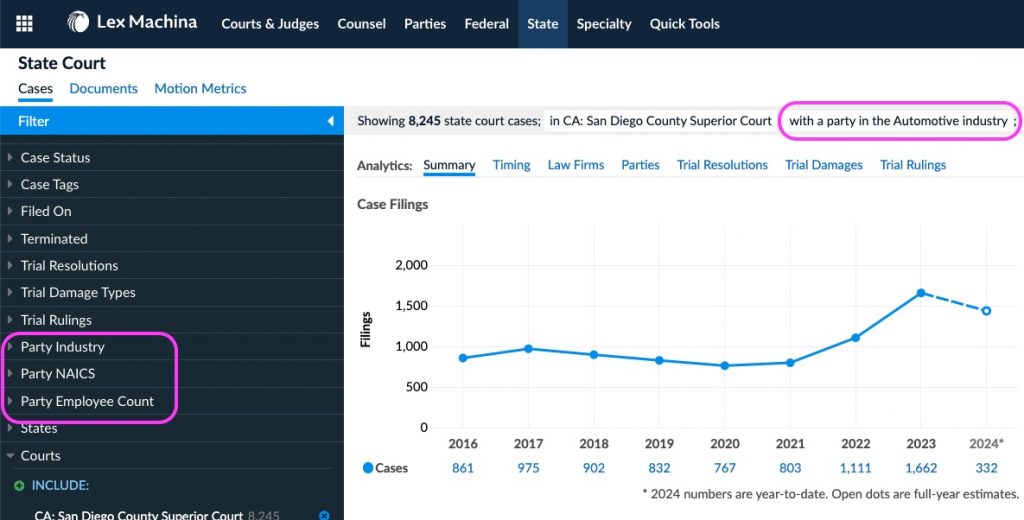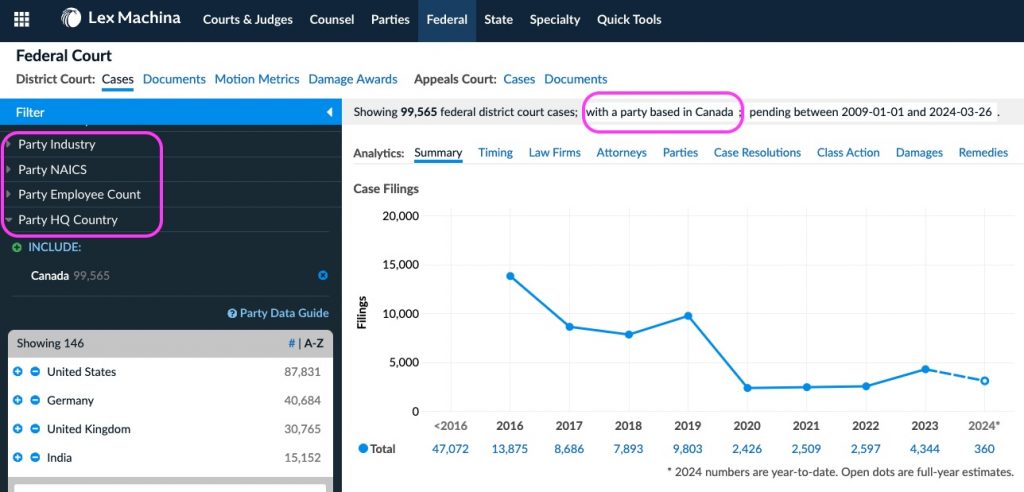A new tool from the litigation analytics company Lex Machina, which is owned by LexisNexis, allows attorneys to view visual maps of a party’s litigation history in order to help illuminate the party’s relationships and litigation trends that might not otherwise be obvious but that could be a factor in crafting a litigation strategy or pitching new business.
Called Litigation Footprint, it provides a visual overview of the federal and state courts across the country in which a party has litigated, derived from the litigation histories of parties in over 27 million cases filed in 94 federal district courts and over 1,300 state courts in 34 states and the District of Columbia.
“This feature is really meeting the customer request to provide the very broadest view of what’s happening with litigation for parties,” Carla Rydholm, head of product at Lex Machina, told me during a demonstration.
To create this new product, Lex Machina added more than 18 million state court records to the more than 9 million federal and state court records it already had. Most of these new records lack the enhancements and tagging of Lex Machina’s existing court data — enhancements that enable the analytics platform for which the company is known.
However, the new records include the information necessary for the Litigation Footprint, including normalized names across courts and jurisdictions. Lex Machina says it now has 134 million normalized names — nearly double what it had before adding these new cases. (Name normalization ensures that a search for a particular name includes all variations and aliases that may appear in court records.)
Litigation Footprint includes both those enhanced cases and these newly added basic cases. When results include enhanced cases, the user will be able to click through to see the full Lex Machina analytics.
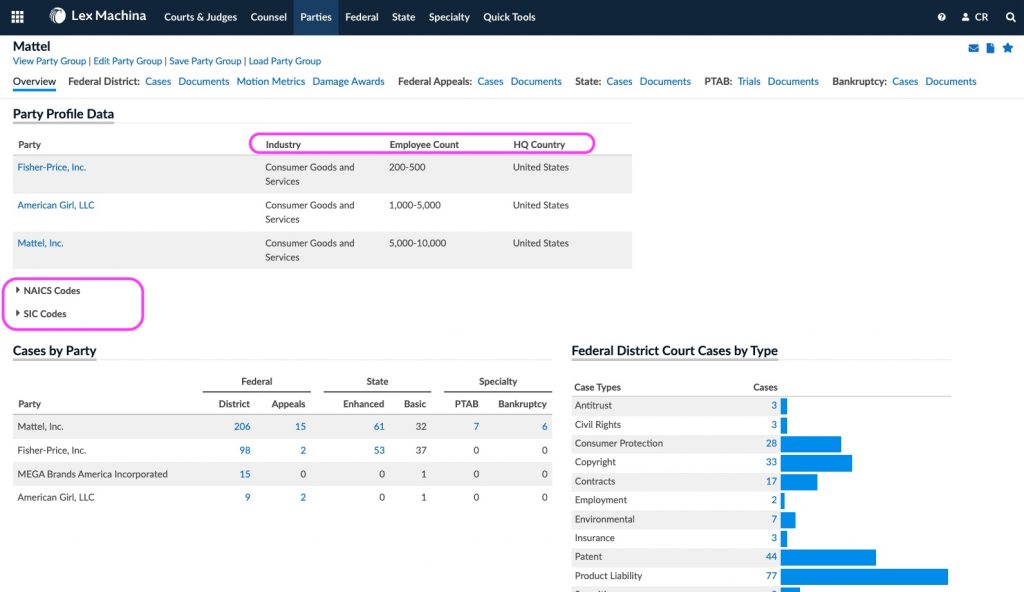
Profile data and industry codes for the party, as well as cases by party and federal district court cases by type.
How to Use It
To view a party’s Litigation Footprint, the user simply goes to the party-search tab within Lex Machina and selects a party to search, or a group of parties (such as a company and its subsidiaries).
Litigation Footprint then shows two side-by-side arrays of grids, each roughly approximating the map of the U.S. One map is for federal court cases and the other is for state court cases. Each cube in the grid represents a state, and each is dynamically color-coded to show the volume of cases within that state. The maps may show that a party has a lot of litigation in some jurisdictions and none in others.
The user can click on any state to see an expanded list of the courts in that state and the numbers of cases for that party in each. For any court for which Lex Machina has enhanced data, the court name shows as a hyperlink and the user can click through to the full analytics for the party in that court.
The user also has the option of running a report to see all the matters involving that party. The report, exported in the form of an Excel file, shows all the party’s matters, including case title, case ID, party role, party name, date filed, and other information.
Although, as mentioned, Litigation Footprint can search cases for a party group, it cannot search for overlap between parties. In other words, if I wanted to search to see the courts in which both Apple and Samsung had litigation, I would have to search each separately and then cross-reference the results on my own.
Litigation Footprint also allows searches to be filtered by industry, NAICS code, employee count, and headquarters country.
Rydholm said this is just the first version of this product and that user feedback will drive its further development.
“We’ll definitely be seeking a lot of user input on what to do to keep people really engaged, with a workflow that’s meaningful, and that … helps them get to the next phase of thinking deeply, making decisions, and doing something actionable.”
Product Use Cases
What is the use case for Litigation Footprint, according to Rydholm, the applications most cited by customers so far are:
- Business development.
- Competitive intelligence.
- Communication with clients and for legal teams.
- Risk profiles and venue trends.
- State court case docket management.
- State court case strategy and civil procedure research.
She said that some customers find the state court data particularly useful, as there has been a gap in their ability to understand what is happening in those courts.
“Just knowing about the cases at first blush is the starting point — assembling the most complete mapping of what’s happened before and then deciding to have your team dig in, depending on the venue, is the big one,” she said.
Expanding Coverage
As I’ve noted before, ever since LexisNexis acquired Lex Machina in 2015, the company has been expanding its court analytics, both by expanding its federal court analytics into new practice areas and by expanding its coverage of state courts.
Since 2015, when Lex Machina covered 91,000 federal cases, it has steadily grown to where, by the end of 2023, it had nearly 5 million state cases and more than 4.1 million federal cases.
Litigation Footprint adds another 18 million state cases to that total. Although, as noted above, many of those are not enhanced for robust data analytics, the company is constantly working to expand the numbers of enhanced cases in its collection, Rydholm said.
